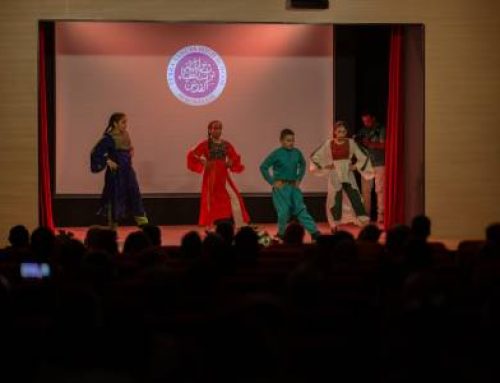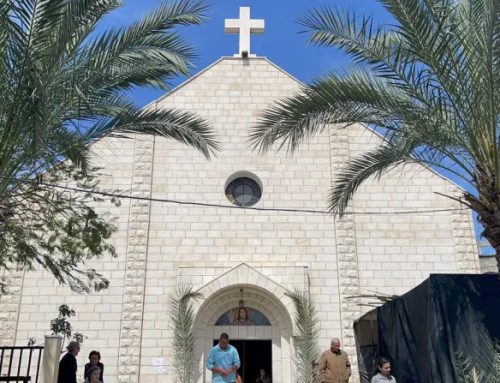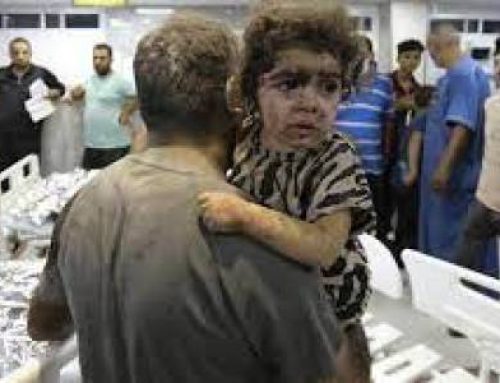HOLY LAND – Symbols of Christian processions, the kawas are not only part of the folklore of Jerusalem. They are also the guardians of traditions inherited from several centuries of history, who watch over an immutable principle of the Holy Land: that things remain as they are.
[…] Beyond their secular presence and their folkloric aspect, few things are known about kawas. Even the spelling of their name is debated: kawas, cavas, kavas, sometimes cawass… All of which piques our curiosity: who are they really? What is their history? What do they represent today and what is their role today when Christian processions are – most often – escorted by the police?
The traditional uniform of the kawas includes an embroidered jacket, a tarboosh, a sword and a staff
A bit of history
In Arabic, “kawas” means “archer”. Under the Ottomans (1299-1923), this term came to designate individual bodyguards armed not with a bow but with a sword. At first in the service of the dignitaries of the Sublime Porte[1], the kawas were gradually lent to foreign diplomats. “Such guards were necessary for them, not only to protect themselves and their delegation against the hostility of the native populations, still unaccustomed to Europeans, but also to allow them to effectively keep order among their own,” explains Gérard Pélissié du Rausas, director of the French Law School in Cairo, in a 1911 book entitled Le régime des Capitulations dans l’Empire Ottoman (“The regime of Capitulations in the Ottoman Empire”).
The renewal of Capitulations[2], in 1740, allowed France to appropriate a right previously reserved to the Ottoman authorities: the recruitment of kawas. Until then, they were imposed by the Sublime Porte, who chose them from among the janissaries, elite soldiers of the Turkish infantry belonging to the sultan’s guard. The French Consulate preferred to recruit them from the local population. The function came with a special status: France offered its “protégés” exemptions from taxes and customs duties. “The status of kawas became particularly coveted,” says Mafalda Ade-Winter, a historian specializing in Ottoman Syria. […]
The kawas escorting Pope Benedict XVI in the Latin Patriarchate of Jerusalem during his pilgrimage to the Holy Land in 2009
“Swiss Arabs”
Because of their role and their presence, the kawas are sometimes likened to the Vatican’s Swiss guards: “They are Arab Swiss,” noted Father Marie-Alphonse Ratisbonne, co-founder of the mission of Notre-Dame de Sion during his first trip to Jerusalem in 1856. This Jesuit attests that, from that time, kawas escorted the religious authorities in the city: “The Patriarch is always preceded by two great kawas and his dragoman,” he wrote in a text published by the Annales de la Mission in June 1894.
To this day, the origin of the collaboration between these consular guards and the Christian churches remains a mystery. Historians have several explanations. “Because of their identification with foreign consular interests, it is not surprising that the kawas continued to play at least a ceremonial role in places with a strong foreign and colonial presence, such as Lebanon or Jerusalem,” says researcher Mafalda Ade-Winter, referring to the fact that the French Consulate in Jerusalem had assumed responsibility for protecting the Catholic presence in the Holy Land. There may have been “loans” of kawas between the two institutions.
Apart from Easter and Christmas, the kawas accompany the procession of the Patriarch wearing simply a tarboosh
“Protecting the Cross”
However, since each of the three main churches has its own kawas, Franciscan Athanasius Macora, in charge of the Statu quo for the Custody of the Holy Land, makes another hypothesis: “The origin of the use of the kawas is probably linked to the fact that they were necessary to maintain order at the Holy Sepulchre.” The kawas would thus be part of the status quo, a division of places, tasks and ceremonies at the Holy Sepulchre, fixed by the Ottomans in 1852 and unchanged since then. The aim is to ease tensions between the different Christian communities that seek to appropriate the holy place. Brother Athanasius continues: “Today, the kawas serve above all an objective of sovereignty. They affirm the presence of the Church they represent,” he explains, before illustrating: “During the Christmas celebrations at the Basilica of the Nativity, the entrance of a Patriarch is always done in the presence of the dragomans and kawas of the other two communities, as a sign of sovereignty.” […]
The kawas accompanying the Patriarch during the Christmas procession in Bethlehem
[Editor’s note] William has been a kawas for the Latin Patriarchate of Jerusalem for just over thirty years. For him, being a kawas is an honor, as his role is to “protect the Patriarch, the priests and the bishops. Because we open the processions, we are also responsible for watching over the cross of Christ, which precedes the clergy.” With a smile, he concludes, “additionally, it also allows you to attend all the celebrations… with the guarantee of being on the front line.”
Full article published in the French version of the Holy Land review of October-November 2022. The Holy Land review, every two months in your mailbox: faith, history, and spirituality.
By: Cécile Lemoine










